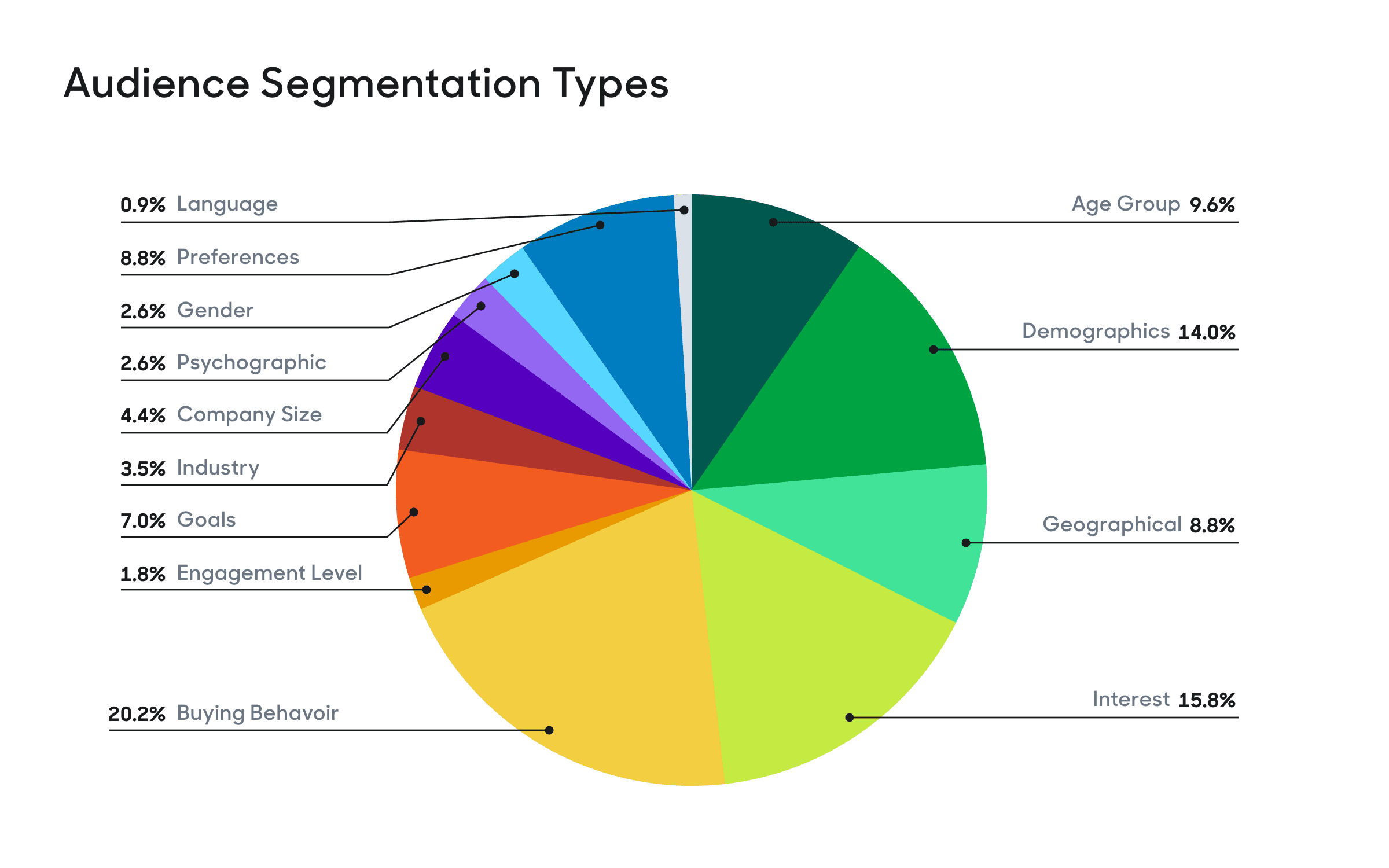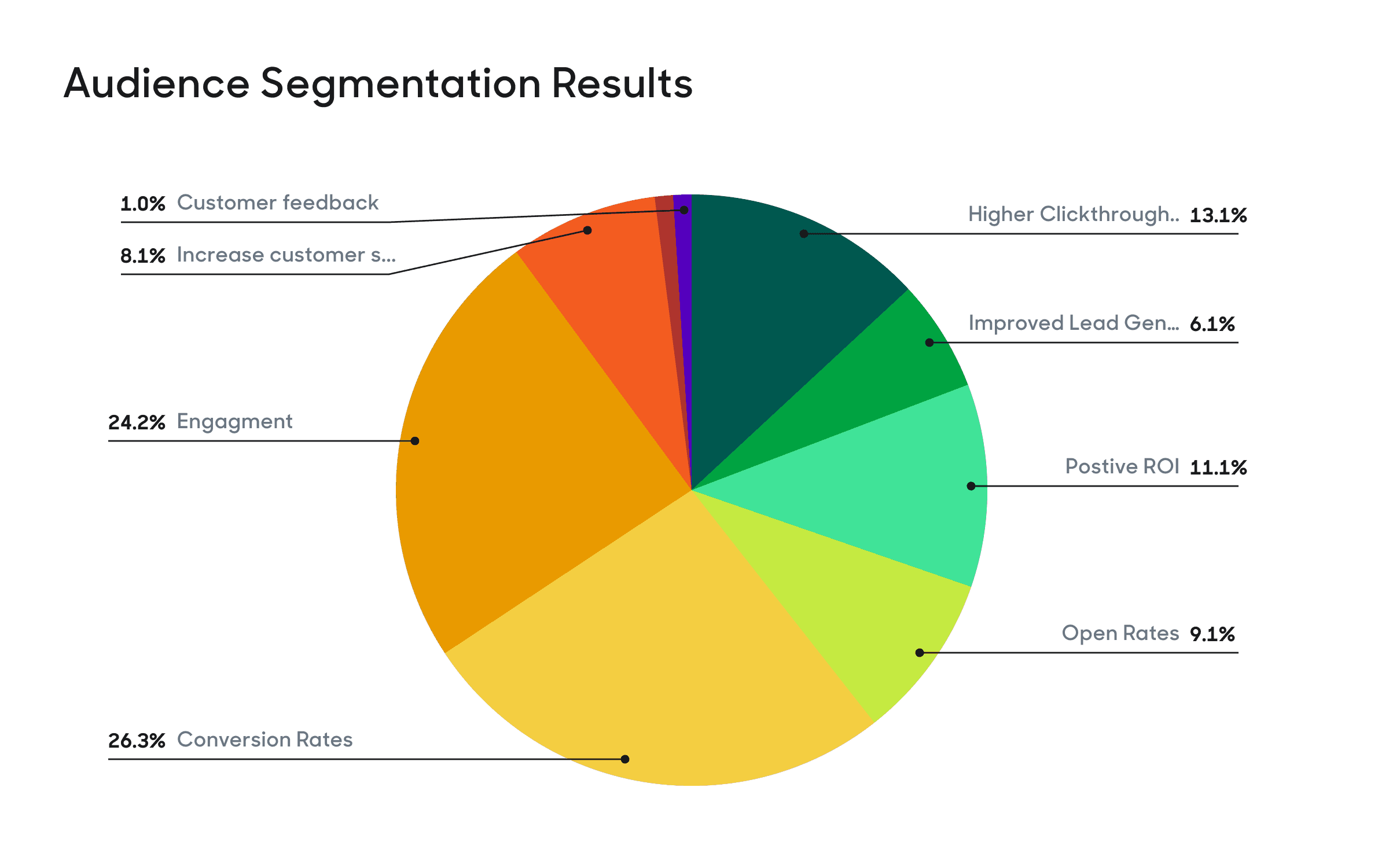What is audience segmentation? (use cases + tools)
Learn how audience segmentation can increase your conversions by being able to create relevant messaging.
Craig Dennis
April 9, 2024
|7 minutes

Every marketing campaign starts with an idea and target audience in mind. The challenge for all marketers is figuring out how to reach that audience and using data to build and create that audience. Managing audience segmentation is the backbone of every marketing campaign across every marketing channel.
In this article, you’ll learn:
- What is audience segmentation?
- Why you should be segmenting your audience
- How to build audience segments?
- Audience segmentation use cases
- Audience segmentation tools
What is Audience Segmentation?
Audience segmentation is a process of grouping existing or prospective customers into cohorts so you can deliver targeted marketing campaigns and personalized experiences for your customers.
Without proper audience segmentation, you treat all your customers the same way. Marketing to everyone is essentially marketing to no one because the key to successful marketing strategies is delivering the right message at the right time to the right individual. The problem is there’s no way to achieve this without segmenting your users into different cohorts.
Types of Data for Audience Segmentation
Knowing which audience segment to create is another challenge, but ultimately, your ability to create these segments depends on the data you have access to. Here are some of the best types of audience segmentation:
- Behavioral data is your customers' actions on your site, such as viewing a page or adding an item to a cart. It allows you to segment customers based on purchases, cart abandoners, or new visitors. Behavioral data are user-complete events captured across your website, mobile apps, or servers. This can include page views, logins, purchases, cart abandonments, signups, etc.
- Attributes are data points about your customer, such as name, gender, income level, geographical location, or psychographic data, such as user interests, values, or preferences.
- Traits are computed values from multiple data points that help you better understand your customers. This could include everything from customer lifetime value, how many songs a user listened to this week, or the most frequent category of articles read on your blog.
- Buyer Interest refers to the different stages of customer interest in your business. You can segment customers based on their marketing funnel stage (awareness, interest, consideration, intent, and purchase) to convert them to the next.
- Data Science Models analyze data to predict your customers’ future behavior and can power recommendation systems or purchasing patterns.
Why You Should be Segmenting Your Audience
We surveyed 62 marketers about the impact audience segmentation had on their business. The survey responses clearly show there’s no golden answer for audience segmentation. It’s a case of examining the outcomes you want to drive and careful experimentation and measurement. The most commonly used segmentation types were buying behavior, interest, and demographics.

The survey also showed that audience segmentation can provide multiple positive outcomes. Many responses reported multiple benefits from audience segmentation, with the most significant results being higher conversion rates, customer engagement, and clickthrough rates.

One major benefit of audience segmentation is how it can positively affect your advertising use cases. Because you’re more mindful of who you’re targeting, you’re not wasting your marketing budget on the wrong audience. There’s no point in targeting customers with free trial ads when they are already paying customers. Audience segmentation helps you show your ads to the right customer for a better ROI.
Audience Segmentation Use Cases
It’s pretty easy to see why audience segmentation matters, but understanding how marketing teams actually use audience segmentation to drive value is slightly more complex. Here’s a breakdown of some of the top audience segmentation use cases.
- Lookalike Audiences: By segmenting your customers based on frequent shoppers or a high lifetime value, you can create a seed audience and upload it to your ad platforms to source a larger audience of new customers with similar characteristics. For example, you could build a seed audience of high-spend users and upload it to Facebook. Facebook could then determine if your audience shares the same characteristics to identify potential audience overlaps and increase your audience reach.
- Retargeting: You can segment potential customers who’ve performed a specific action, such as adding an item to cart or signing up for a demo, to convert them. For example, you could retarget users with Facebook ads who have recently added an item to their cart but abandoned it to encourage them to complete their purchase.
- Remarketing: Depending on whether your customers are dormant or churned, you can segment them to reengage them to increase their lifetime value or purchase a product to resubscribe. For example, if you were a coffee company, you could segment customers who haven’t ordered in the last two weeks with a promotion to get them back in the store.
- Dynamic Ads: You can use dynamic ads to help you generate hundreds of ad variations by dynamically changing the product of a user’s ad with one they have recently viewed. For example, if a user on your online store is looking at red Adidas sneakers, you can send that data to Facebook and dynamically show ads for red Adidas sneakers.
- Loyalty Programs: To incentivize customers to keep spending with you, you can segment them based on the number of points they’ve collected from spending or by the tier they’re on. For example, you can segment your audience based on their earned points and send them hyper-relevant offers to continue spending with your business.
- On-site Personalization: You can tailor your users' experience on your website based on their preferences or past behaviors. For example, if you were an e-commerce store, you could use a user's buying history to personalize the home page with products they might be interested in.
Audience Segmentation Tools
There are many different audience segmentation tools available on the market today. Here’s a quick breakdown of the best platforms available in the market today:
- Hightouch is a Composable CDP that lets you build and segment audiences using customer data in your data warehouse. The platform has a no-code UI your marketers can use to build and define audiences and a robust sync engine to sync those customer segments to 200+ destinations to power your digital marketing campaigns.
- Segment is a Customer Data Platform specializing in event collection and Data Activation. The platform lets you build and manage audience cohorts and sync them to downstream destinations to power your marketing efforts. However, due to the rigid data model within the platform, these segments are usually limited to behavioral data and often missing critical context from your other sources.
- Simon Data is a fully managed CDP that runs on Snowflake. The platform lets you build audience cohorts from your Snowflake data and sync them to downstream marketing tools. However, the platform does not work with other data warehouses. It only runs on Snowflake.
- Adobe CDP is a newer product offered under the Adobe Experience Cloud. This platform helps you consolidate all of the data from your various Adobe tools to create a unified customer profile, from which you can then build audience segments for other Adobe tools like Marketo. However, the platform has little utility if you’re not an existing Adobe customer.
Closing Thoughts
Many marketing tools allow you to segment audiences in their respective platforms, but the problem is that you’re limited to the data available. A much better approach to audience segmentation is to start further upstream in your tech stack–notably your data warehouse—because it houses all your customer data across all your sources.
Composable CDP solutions like Hightouch bridge the gap between your data and marketing teams, providing an interface your marketing teams can use to segment audiences directly from your data warehouse so they can sync that data to any tool in your MarTech stack.
If you want to learn more about how Hightouch can build richer and more accurate audiences using your customer data, book a demo with one of our solutions engineers.










